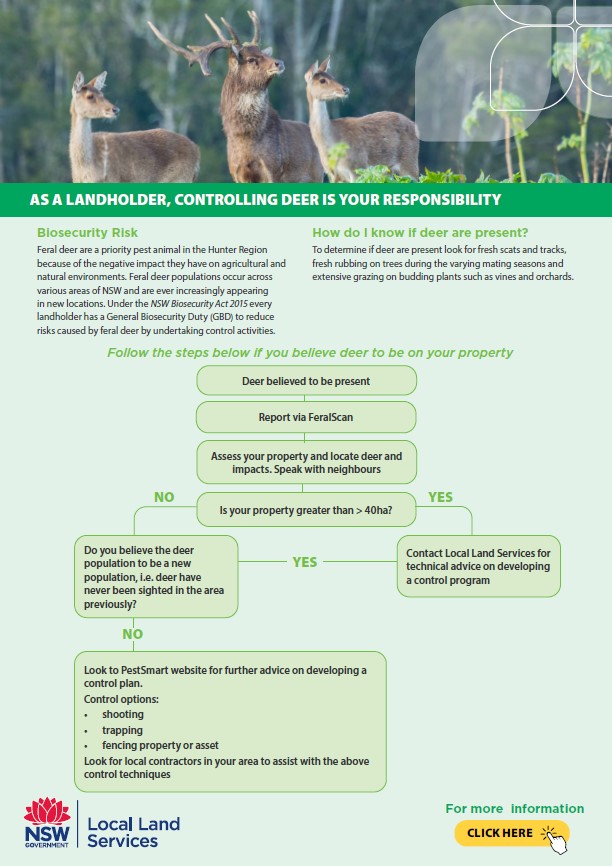
Feral deer
Feral deer are elusive, highly mobile and can leave a trail of damage to farm infrastructure, produce and vehicles.
 Wild deer on private landholdings in NSW now fall into the same category as feral pigs, wild rabbits and foxes: a pest animal under the NSW Biosecurity Act 2015.
Wild deer on private landholdings in NSW now fall into the same category as feral pigs, wild rabbits and foxes: a pest animal under the NSW Biosecurity Act 2015.
There are three prominent species: fallow, sambar and red deer. These species compete for feed and can also consume between 1.5 and 4.5 times more feed than a dry sheep.
If you think you have wild deer on your property, look for the following signs and start monitoring their movements. Keep an eye out for rubs on trees, scats and wallows in creeks and waterways, and if you have the means, try setting up some fixed cameras in key locations to monitor for wild deer.
The best approach to managing wild deer is to form a coordinated group in your area with your neighbours, and we can help you through this process.
To better understand your deer control options, download the decision tool. PDF, 228.55 KB
Biosecurity Risk
Feral deer populations occur across various areas of NSW and are ever increasingly appearing in new locations. Under the NSW Biosecurity Act 2015 every landholder has a General Biosecurity Duty to reduce risks caused by feral deer by undertaking control activities.
How do I know if deer are present?
To determine if deer are present look for fresh scats and tracks, fresh rubbing on trees during the varying mating seasons and extensive grazing on budding plants such as vines and orchards.
Find out more about feral deer control
The National Feral Action Plan website has resources to download.